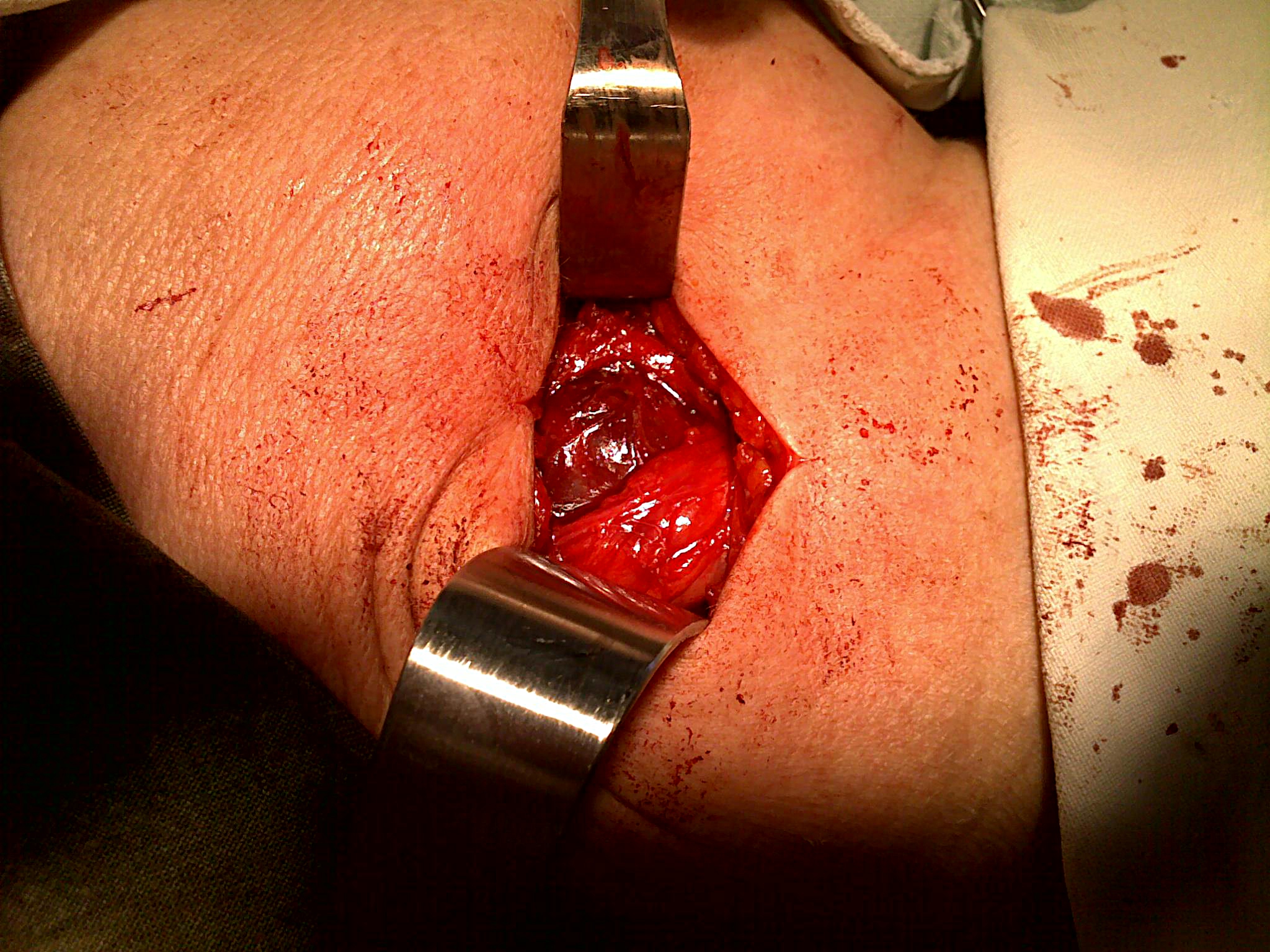Sandbox:Sahar
- On microscopic histopathological analysis, carotid body tumor composed of:
- The chief or paraganglionic cells composing the predominant part of the tumor and contain eosinophilic granular materials and oval or round nuclei.[2]
- The supporting or sustentacular cells responsible for the chemoreceptor activity of the carotid body
- The characteristic finding of this tumor is:
- Chief cells Arranged in distinctive pattern called cell balls (zellballen)
- Separated by fibrovascular stroma and surrounded by sustentacular cells
- The cytoplasm is pale and diffuse with occasional presence of the eosinophilic granules.[3]
- The nuclei are round to spindle shape.
- The tumor is highly vascular.
- Although there is no well-accepted histologic criteria for the diagnosis of malignant tumors, worrisome histologic features include:[4]
| Features on Gross Pathology | Image |
Characteristic findings of carotid body tumor, include:[4]
|
 |
| Patient with carotid body tumor | |||||||||||||||||||||||||||||||||||
| History, Physical examination, and evaluation of cnotralateral side | |||||||||||||||||||||||||||||||||||
| Patients with age < 50 years Patients with multiple paraganglioma Patients with a positive family history | The rest of the patients | ||||||||||||||||||||||||||||||||||
| SDHD genetic testing | |||||||||||||||||||||||||||||||||||
| Presence of SDHD mutation | Absence of SDHD mutation | ||||||||||||||||||||||||||||||||||
| SDHC and SDHB genetic testing | |||||||||||||||||||||||||||||||||||
| Presence of SDHC/B mutation | Absence of SDHC/B mutation | ||||||||||||||||||||||||||||||||||
| All the relatives should be evaluated for the presence of paragnaglioma | |||||||||||||||||||||||||||||||||||
| whole-body 18F-dihydroxyphenylalanine (F-DOPA) positron emission tomography to assess the presence of other paragangliomas | |||||||||||||||||||||||||||||||||||
| Presence of other paraganglioma | Absence of other paraganglioma | ||||||||||||||||||||||||||||||||||
| 24-hour urine catecholamines and MRI for biochemical screening | surveillance screening every 5 years | ||||||||||||||||||||||||||||||||||
- ↑ ACMG Work Group on Management of Pompe Disease. Kishnani PS, Steiner RD, Bali D, Berger K, Byrne BJ; et al. (2006). "Pompe disease diagnosis and management guideline". Genet Med. 8 (5): 267–88. doi:10.109701.gim.0000218152.87434.f3 Check
|doi=value (help). PMC 3110959. PMID 16702877. - ↑ Patetsios, Peter; Gable, Dennis R.; Garrett, Wilson V.; Lamont, Jeffrey P.; Kuhn, Joseph A.; Shutze, William P.; Kourlis, Harry; Grimsley, Bradley; Pearl, Gregory J.; Smith, Bertram L.; Talkington, C.M.; Thompson, Jesse E. (2002). "Management of Carotid Body Paragangliomas and Review of a 30-year Experience". Annals of Vascular Surgery. 16 (3): 331–338. doi:10.1007/s10016-001-0106-8. ISSN 0890-5096.
- ↑ Bibbo, Marluce (2008). Comprehensive cytopathology. Philadelphia, PA: Saunders/Elsevier. ISBN 978-1-4160-4208-2.
- ↑ 4.0 4.1 Wieneke, Jacqueline A.; Smith, Alice (2009). "Paraganglioma: Carotid Body Tumor". Head and Neck Pathology. 3 (4): 303–306. doi:10.1007/s12105-009-0130-5. ISSN 1936-055X.